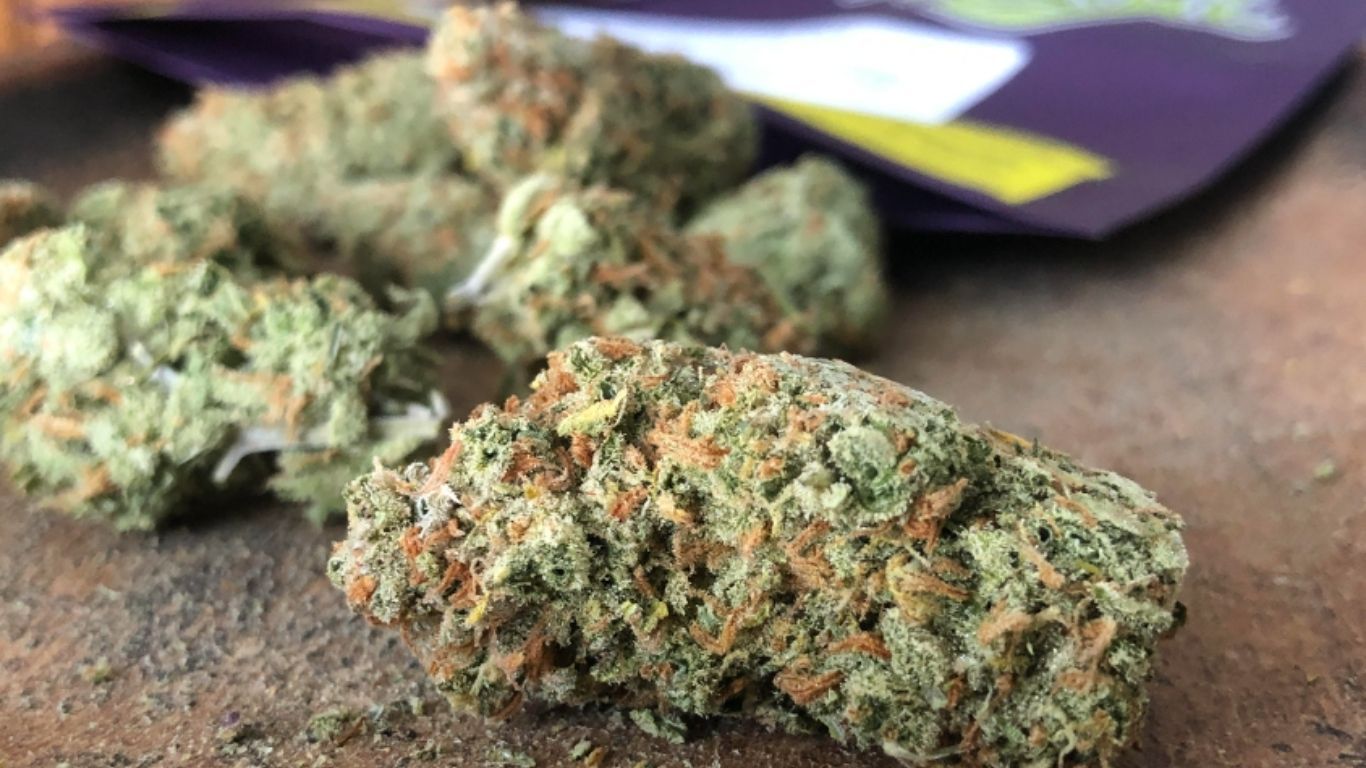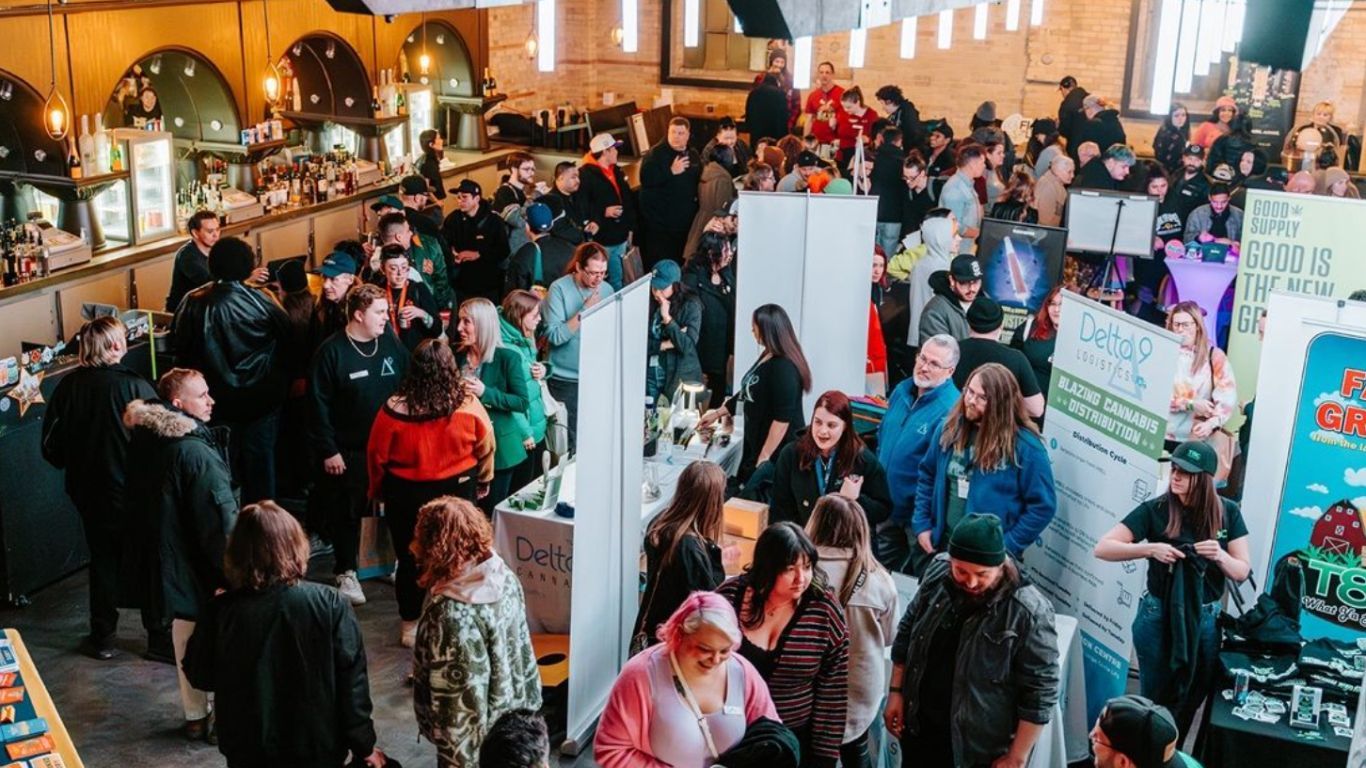
Four years after chairing the federal government’s Task Force on Cannabis Legalization and Regulation, and two years after legalization finally came into force, Anne McLellan says she’s happy to see very little has changed in Canada.
Sure, legalization has had it’s bumps along the way, and there have been headlines, especially in the early days of new retail stores and photo ops, but overall it’s been somewhat tame.
“All to be expected. It was actually so Canadian in its rollout,” says McLellan in a recent interview with StratCann discussing legalization’s two year anniversary in Canada.
In addition to serving as the Chair of the federal government’s nine-person legalization task force, McLellan has a distinguished career serving as a professor in the University of Alberta’s Faculty of Law, and as both Associate Dean and Acting Dean of the Faculty, a federal MP, as well as Deputy Prime Minister of Canada and Minister of Public Safety and Emergency Preparedness, Minister of Health, Minister of Justice and Attorney General of Canada, and Minister of Natural Resources.
The legalization task force was formed by the federal government in 2016 to consult with the public on the government’s plans to legalize, and provide a report to guide the legislation that would be tabled in parliament in 2017. In addition to McLellan, it included representatives from academia advocacy, law enforcement, medical research, and more.
That report took into account months of cross country meetings with Canadians from a variety of sectors, speaking with Indigenous communities, youth experts, parents, patients, relevant experts, law enforcement, as well as 30,000 submissions from individuals and organizations. The report was presented by the end of 2016.
Historic, but uneventful
Despite what was at the time this whirlwind of consultation, research, interviews, and debating legislation, two years later McLellan says she’s happy to see little has actually changed in Canada.
“Yes, it was a significant event, Canada was only the second country to legalize on a national basis, after Uruguay,” explains McLellan. “And there were a lot of unknowns. But I didn’t actually buy into the idea that it would be this big change. I just thought I would wake up the day after and the world would be exactly the same. And it was.”
This polite, Canadian approach was all a part of the plan, she says, and a way to buffer against what were still significant concerns from many Canadians, even some who supported the idea of legalization.
“You will remember in the lead up to legalization, that day? All the hype was as if people thought that there would be reefer madness in the streets?”
Now that cannabis has been legal in Canada for about two years, she says she’s fairly impressed at how quickly things have evolved in a relatively smooth way. She points out that although there were and continue to be challenges, from problems some patients have had in continuing to access through the medical channels, or in the roll out of different provincial models, the more dire fears of some who opposed legalization in general never really materialized.
That’s not to say everything was or is perfect, I would never suggest that. But what we were hoping was that youth numbers wouldn’t go up, and they haven’t. People were scared about (increases in impaired driving), but we haven’t seen that either.ANNE MCLELLAN
Youth use, impaired driving, replacing the black market
“That’s not to say everything was or is perfect, I would never suggest that,” McLellan points out. “But what we were hoping was that youth numbers wouldn’t go up, and they haven’t. And, people were scared about (increases in impaired driving), but we haven’t seen that either.”
Although those kinds of concerns might seem silly or unfounded now, just a few years ago they were still a major part of the debate.
“People were worried. All we needed was a handful of tragic accidents in this country on the road and the political pushback would be very tough. But we haven’t seen that.”
“I think if you talk to the police, the police would say not a lot has changed. Maybe there’s a little black market activity, but I don’t think there’s been an inordinate demand or increase for law enforcement services. I think police were all looking for increases in their budgets because of legalization and most of them got some increase, but has the workload actually increased in any significant way? I would say, looking across the country, the answer is probably no.”
Another goal of legalization was to shift from the black market. McLellan says she’s pleasantly surprised by the gains already being made to shift much of the share of the market from the illegal to legal arena, citing recent figures from Statistics Canada that estimate the legal market is capturing about 55% of domestic market demand.
“I always said that my goal was to have 80% of the black market gone in ten years. Now we’re two years in and 55% of the product is being purchased legally. That’s not bad for the first two years.”
Provinces and retail
This is all that more impressive she points out, given the many early stumbling blocks with things like provincial rollout and retail access. A former four term Liberal MP for Edmonton Centre, McLellan speaks with some pride about her province’s rollout compared to other provinces like British Columbia or Ontario, the latter of which she says has likely had a major impact on the success of legalization nationwide.
With over five hundred retail stores currently in Alberta, compared to just under 200 in Ontario (and none for the first six months of legalization), she says she thinks the change in government in the country’s most populated province just months before legalization, and all the policy shifts that came with that, has likely held the province back in terms of a more robust retail rollout for so many Canadians.
“Whereas Alberta already had a similar system of private retail stores for alcohol in place that was somewhat of a template for their private cannabis retail system, Ontario switched at the last minute and moved away from a public model similar to their alcohol retail network to an entirely private retail model, exacerbated by a change in government in the months before legalization.”
“One of the reasons we don’t have that number higher is because Ontario has been a bit of a basket case in terms of rolling out readily accessible retail to the country’s largest province. Thirty seven percent of our population in this nation lives in Ontario.”
It’s understandable given the different priorities of the new Ontario government, not to mention the challenges now with COVID-19”, she is quick to point out, “but one has to factor in those limitations when measuring the success of legalization so far in Canada.”
“That’s democracy. Governments change. They take different approaches to the retailing of this product. And two years in, you still have a very low number of stores on the basis of their population, which speaks to the fact the new government didn’t put a priority on getting its act together to try and get retail stores up and running and providing reasonable access to the Ontario consumer.”
“I don’t call that big P partisan so much as just what often happens when governments change, new parties come to power, they have a somewhat different philosophy about the role of government and the free market, and it just so happened to come at a time that legalization was happening.”
One of the reasons we don’t have that number higher is because Ontario has been a bit of a basket case in terms of rolling out readily accessible retail to the country’s largest province. Thirty seven percent of our population in this nation lives in Ontario
Three year review and transitioning craft growers
Approximately one year away from the beginning of a scheduled review of the cannabis regulations, McLellan says she expects there will be a host of public and industry concerns being debated, such as packaging and marketing restrictions. But one issue she is interested in is how successful legalization has been at getting what she calls the grey market, craft growers to transition over and finding a way to follow the regulations.
“What about the grey market? Bringing in the guys who we called craft, who have been growing for years, who’ve talked about the love of the plant and the genetics they’ve got. In the Okanagan, or in the eastern townships of Quebec, or wherever it is.
“I think we need to look at that in the review – how many of those people have actually made the move into the legal market and understand why more of them haven’t. Maybe it’s just too onerous for them to go through all the hoops, the security clearances, the physical infrastructure, the quality assurance.
“At the three year review, how many of them have made the transition? If we discover that many have, then fine, perhaps there’s not a problem. But are there ways that we might be able to make it easier to come into the regime?”
Medical cannabis
One of the issues the task force was asked to look at was Canada’s medical cannabis program and it’s long term viability, which will itself undergo a five year review beginning in 2023. Ensuring the medical system remained in place for at least the first several years of legalization was important, says McLellan, and reflects the feedback they heard from patients and some physicians.
At the same time, they also heard from many medical experts and medical organizations who called for an end, or at least significant restrictions to the access program. Her hope is that although five years is still a short time, that some clinical research can emerge to help inform that process.
“We certainly heard from both sides of this, very eloquently, and that’s why we thought five years would be sufficient time,” she explains. “You’re not ripping out from patients – those using medicinally – their world, the framework in which they are used to dealing with. But at the end of five years, lets see where this is at.”
“You want to know at the end of five years whether there is a reason to sustain a so-called separate stream or whether patients or a vast majority of them are finding the products they need through their doctors, through their pharmacists, getting the advice they need and then buying their product at the local cannabis store. Or the local pharmacy.”
More research needed to guide good policy
More research in general is a benefit of legalization, she points out, and will be needed to help guide policy makers’ understanding of its success and failures.
“I would like to see more research in terms of both the benefits and potential harms of cannabis in different age categories and different quantities of use. I think we need longitudinal studies following people to determine longer term health benefits and health risks. So I would hope that as we work through legalization and it becomes a stable and accepted part of our existence, that that research is enhanced and we learn more about the benefits and the risks.”
We still have a lot of education, a lot of learning, and a lot of research to do. I think it’s fundamentally important to continue to keep our eye on the ball and not think that this has been such a success that somehow we can let our guard down and not do the education, the research and the learning that will help us avoid some of the problems with alcohol use and tobacco use.”












